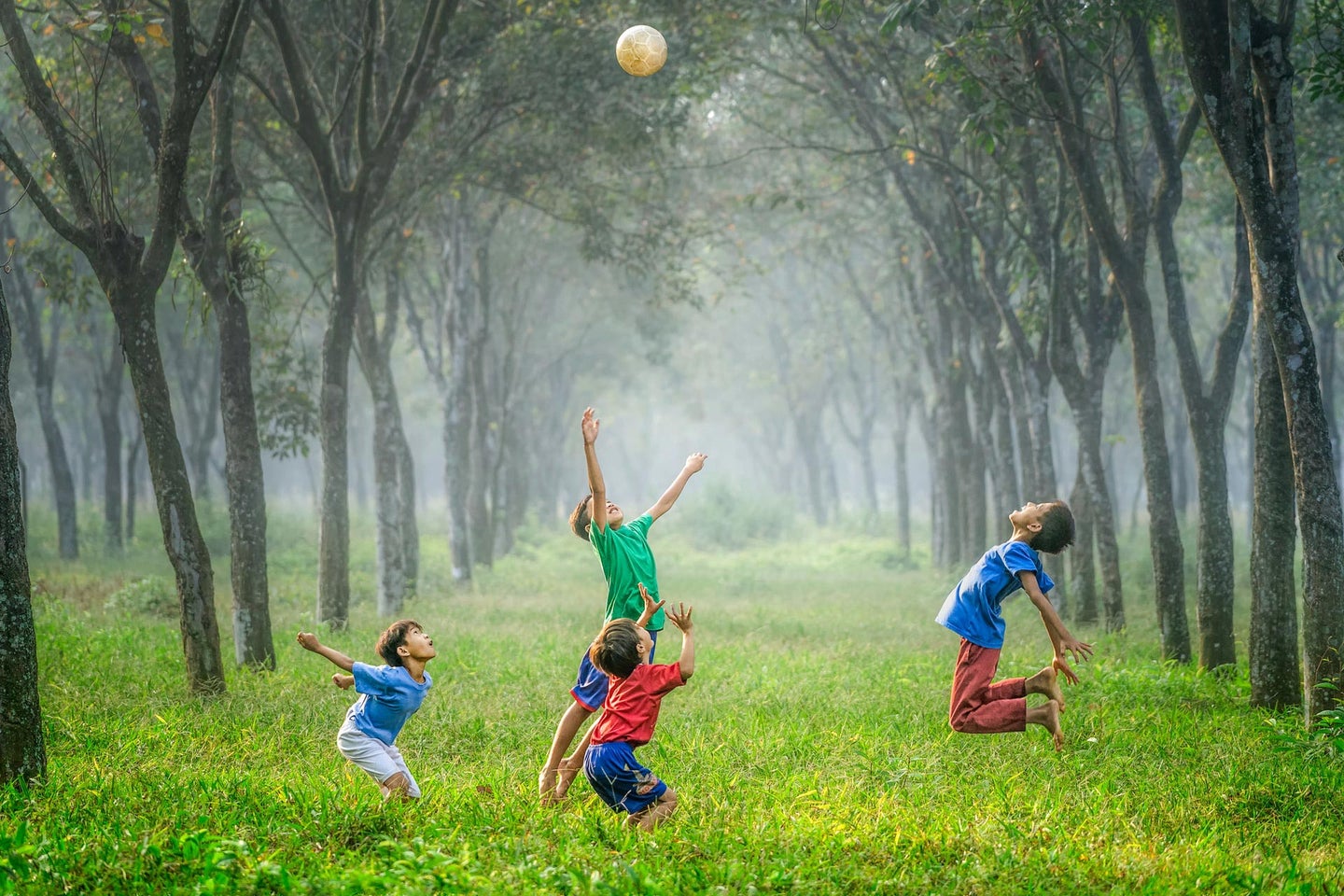Goofing off is good for kids—here’s the evidence
It's important for successful adult-ing, experts say.

Archaeological records— and the modern-day antics of our primate relatives—make it clear that monkeying around goes way back. Less certain, however, are the developmental and evolutionary advantages that underlie our instinct to build forts, toss balls, and cuddle stuffed critters. We asked four experts why humans just wanna have fun.
“Playful behavior can help a species survive. Adult bonobos, for example, seem to make silly faces as a way of reducing tension with potential mates. Similarly, male polar bears sometimes fake-fight, which may help them to gauge the limits of their own strength before risking full-on brawls.”
—Gordon Burghardt, professor of psychology and ecology at the University of Tennessee, Knoxville
“Children have always liked animal figurines, dolls, and mini weapons and tools. But so-called object play is even older than humanity. Chimpanzee babies do it too. Like our own kids, they want to copy what they see adults doing so they can gradually master it.”
—Michelle Langley, archaeologist at Griffith University
“Make-believe can help little ones learn to manage and control their emotions. In the classic ‘marshmallow test,’ preschoolers successfully fended off the temptation to eat a sweet treat by pretending it was something else, like a fluffy white cloud.”
—Stephanie Carlson, developmental psychologist at the University of Minnesota
“Sociodramatic play—when kids act out events like weddings—is like a collaborative script-writing process. Children get feedback on their ideas and learn how to negotiate; if they disagree on what props to use, for instance, they must try a new approach or walk away to avoid conflict.”
—Doris Fromberg, professor emerita of education at Hofstra University
This story appeared in the Summer 2020, Play issue of Popular Science.